
GKT School of Medical Education is the medical school of King's College London. The school has campuses at three institutions, Guy's Hospital (Southwark), King's College Hospital and St Thomas' Hospital (Lambeth) in London – with the initial of each hospital making up the acronymous name of the school. The school in its current guise was formed following a merger with the United Medical and Dental Schools of Guy's and St Thomas' Hospitals on 1 August 1998. As of 2023, the medical school is ranked 5th best in the UK for clinical medicine by U.S. News & World Report, and 10th best worldwide by Times Higher Education.

King's College London is a public research university located in London, England. King's was established by royal charter in 1829 under the patronage of King George IV and the Duke of Wellington. In 1836, King's became one of the two founding colleges of the University of London. It is one of the oldest university-level institutions in England. In the late 20th century, King's grew through a series of mergers, including with Queen Elizabeth College and Chelsea College of Science and Technology, the Institute of Psychiatry, the United Medical and Dental Schools of Guy's and St Thomas' Hospitals and the Florence Nightingale School of Nursing and Midwifery.

St Thomas' Hospital is a large NHS teaching hospital in Central London, England. Administratively part of the Guy's and St Thomas' NHS Foundation Trust, together with Guy's Hospital, Evelina London Children's Hospital, Royal Brompton Hospital and other sites. It is also a member of King's Health Partners, an academic health science centre, and is one of three sites used by King's College London GKT School of Medical Education.

Thomas HodgkinRMS was a British physician, considered one of the most prominent pathologists of his time and a pioneer in preventive medicine. He is now best known for the first account of Hodgkin's disease, a form of lymphoma and blood disease, in 1832. Hodgkin's work marked the beginning of times when a pathologist was actively involved in the clinical process. He was a contemporary of Thomas Addison and Richard Bright at Guy's Hospital in London.
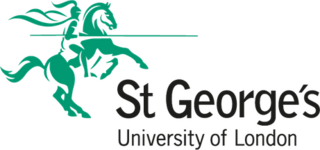
St George's, University of London (SGUL), legally the St George's Hospital Medical School, was a public university in South London, England. It merged with City, University of London to form City St George's, University of London in August 2024. The names "City, University of London" and "St George’s, University of London" will provisionally continue as trading names until March 2025.
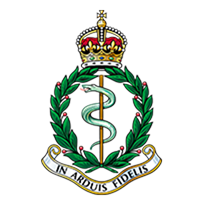
The Royal Army Medical Corps (RAMC) was a specialist corps in the British Army which provided medical services to all Army personnel and their families, in war and in peace.
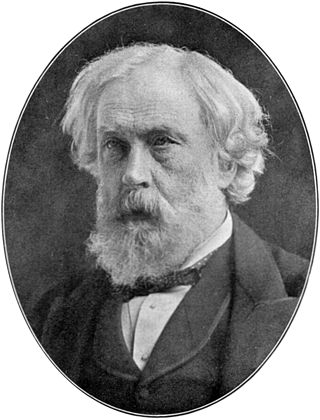
Sir Samuel Wilks, 1st Baronet, was a British physician and biographer.
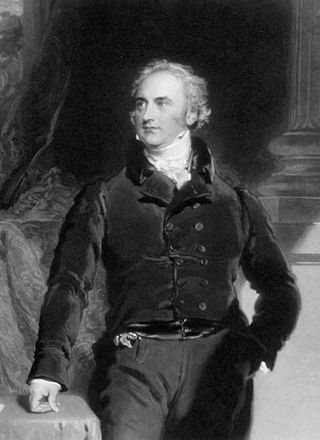
Sir Astley Paston Cooper, 1st Baronet was a British surgeon and anatomist, who made contributions to otology, vascular surgery, the anatomy and pathology of the mammary glands and testicles, and the pathology and surgery of hernia.

Peter Parker was an American physician and a missionary who introduced Western medical techniques into Qing dynasty China, at the city of Canton. It was said that Parker "opened China to the gospel at the point of a lancet."

Lam Qua, or Kwan Kiu Cheong (關喬昌), was a Chinese painter from the Canton province in Qing dynasty China, who specialized in Western-style portraits intended largely for Western clients. Lam Qua was the first Chinese portrait painter to be exhibited in the West. He is known for his medical portraiture, and for his portraits of Western and Chinese merchants in Canton and Macau. He had a workshop in 'New China Street' among the Thirteen Factories in Canton.

Poland syndrome is a birth defect characterized by an underdeveloped chest muscle and short webbed fingers on one side of the body. There may also be short ribs, less fat, and breast and nipple abnormalities on the same side of the body. Typically, the right side is involved. Those affected generally have normal movement and health.

Sir William Knighton, 1st Baronet, was Private Secretary to the Sovereign under George IV (1822–1830).
The United Medical and Dental Schools of Guy's and St Thomas' Hospitals was the name given to the joint medical and dental school formed in London as a result of the merger of Guy's Hospital Medical School, St Thomas's Hospital Medical School and the Royal Dental Hospital of London.

Benjamin Guy Babington was an English physician and epidemiologist.
William David Doherty, M.A., M.Ch., F.R.C.S., known as George Doherty was a medical superintendent of Guy's Hospital, London, and a former captain of the Ireland national rugby union team.
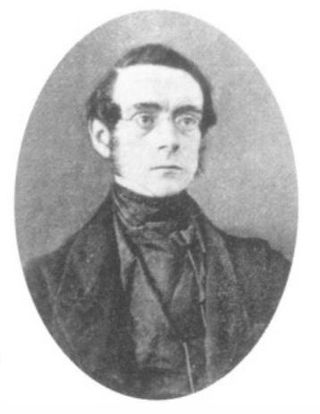
Golding Bird was a British medical doctor and a Fellow of the Royal College of Physicians. He became a great authority on kidney diseases and published a comprehensive paper on urinary deposits in 1844. He was also notable for his work in related sciences, especially the medical uses of electricity and electrochemistry. From 1836, he lectured at Guy's Hospital, a well-known teaching hospital in London and now part of King's College London, and published a popular textbook on science for medical students called Elements of Natural Philosophy.

George Owen Rees was a Welsh-Italian physician.
Jerusha Jacob Jhirad FRCOG, MBE was an Indian physician.
Samiran Nundy is an Indian gastrointestinal surgeon, medical academic, writer and the President of All India Institute of Medical Sciences, Rishikesh. He is a former member of the faculty at the Cambridge University, London University and Harvard University, and is the founder editor of the National Medical Journal of India and Tropical Gastroenterology. The Government of India awarded him the fourth-highest Indian civilian honour of Padma Shri in 1985.
James Perchard Tupper M.D. was a British botanist and surgeon who was one of the first to speculate that plants are sentient.














